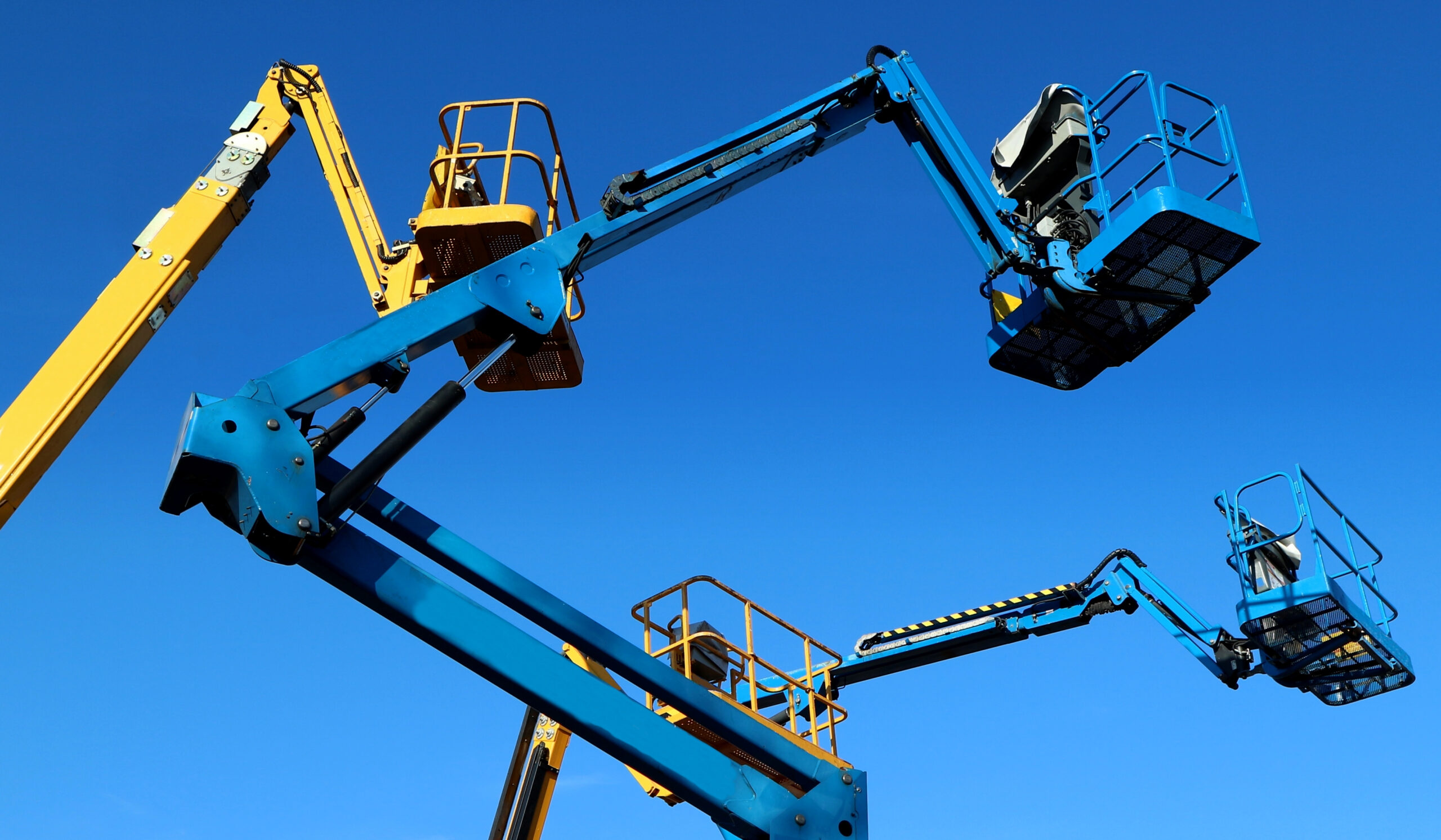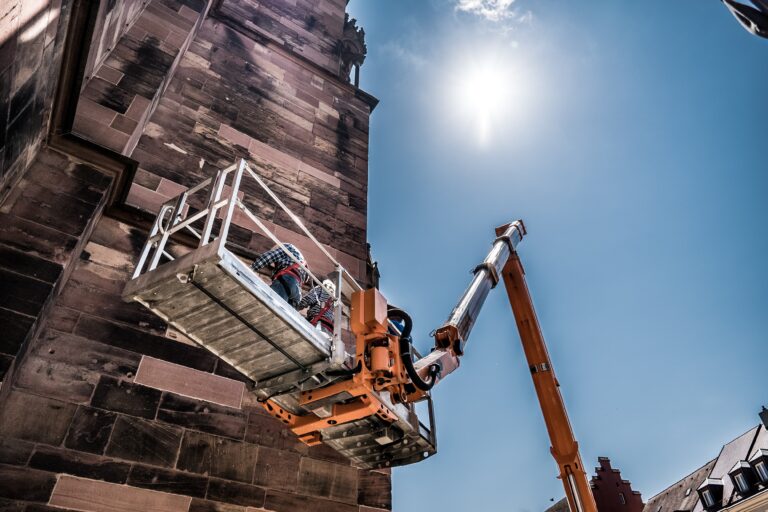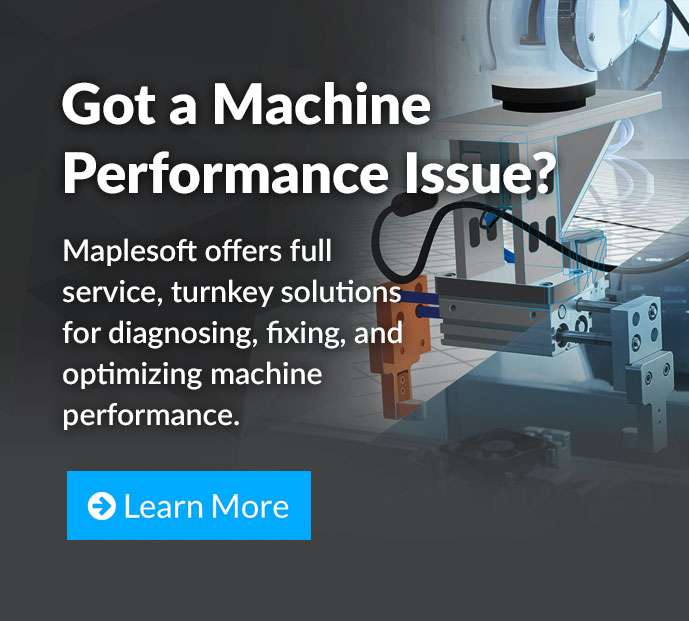
While we gather results from all of you on our virtual commissioning survey, there’s some news to share in the world of industrial machines – namely, a company that used virtual commissioning when diagnosing and fixing vibrations on aerial work platforms. With the same techniques we’ve described in the past for vibration analysis, this company was able to implement virtual test platforms that ironed out a variety of operational issues, preventing a host of future problems with the physical machines themselves.
The company in question is XCMG – a leading global manufacturer of construction equipment. They worked with Maplesoft to create digital twins of their aerial work platforms, which unlocked a variety of new capabilities for their development. In addition to fixing vibrations on aerial work platforms, they gained the ability to do enhanced safety testing, operator training, and generally look to the future for simulation-based optimizations on future products.
Read below for the full story on how XCMG is using virtual commissioning for fixing vibrations on aerial work platforms.
Using Virtual Commissioning for a New, Competitive Aerial Work Platform
Compared to construction equipment of years past, the modern technology in new machines can deliver an astounding level of performance and safety features. The traditional mechanical systems have been replaced by high-performance, multidomain engineering products that allow builders to work faster and safer than ever before. As these products evolve, however, the key challenge that manufactures face is the control of these machines – the hardware and software that enable every subsystem of the machine to work together with precision.
As a leading manufacturer of construction equipment, XCMG recognizes the need to continuously adopt new technologies if they are to remain competitive. As part of their goal to be a global, top three construction equipment manufacturer, they invest heavily into the research and development of new equipment technology. Recently, they invested strategically into digital twins and virtual commissioning technologies, allowing them to design, validate, and optimize their new machines using accurate virtual models. These virtual models would give XCMG the tools to iterate on their designs much faster than traditional, physical methods, and reduce the need for physical travel and on-site engineering costs.
At the XCMG European Research Center, engineers worked to implement virtual commissioning on their new aerial work platform (Figure 1). The team wanted to implement testing of their electronic control unit (ECU) software as early as possible in their design process, in order to reduce the required testing on the physical machine. To accomplish this testing, they needed a physics-based model of their aerial work platform. These models, otherwise known as digital twins, would serve as the platform by which different control units could be tested against. The control units could be tested early in their design as software code, or later in the design when installed on the hardware ECUs themselves.

Figure 1: A firefighting truck developed by XCMG, pictured with an aerial work platform (DG54m1 8X4 54m Fire Fighting Truck)
Creating the Digital Twin
To create the digital twin of their aerial work platform, XCMG used MapleSim, a physics-based tool for the creation of multidomain digital twins. MapleSim provides users a drag-and-drop modeling environment for the creation of dynamic machine models, allowing engineers to begin by importing their CAD models. Within MapleSim, the digital twins can be created to include the effects from multiple domains – mechanical, hydraulic, thermal, electrical, and so on. Engineers at XCMG imported their CAD models and used MapleSim for the creation a 3-D multibody machine model (Figure 2). Additional model components were added after the CAD import, including joints, sliders, cylinders, links, and more.
At this stage in the design, XCMG engineers could visualize 3-D simulations of their aerial work platform’s multibody dynamics, and perform any necessary design iterations.

Figure 2: A view of the MapleSim model for the aerial work platform, representing the dynamic, multibody performance of the machine.
To establish the entire virtual test platform, XCMG used the Functional Mock-Up Interface (FMI) standard, which allows platform-independent models to simulate and interact with each other. The MapleSim Connector for FMI was used to export the entire MapleSim model to a Functional Mock-Up Unit (FMU), where it could then be imported for use in FLUIDON’s Virtual Engineering Lab (VEL). Provided to XCMG, the VEL allows for real-time co-simulation of engineer models. These co-simulations can be performed in an environment that includes the machine control software (Software-in-the-Loop simulation) and control hardware (Hardware-in-the-Loop simulation). By combining the MapleSim FMU with the hydraulics-based DSHplus FMU, engineers at XCMG had a high-fidelity, detailed co-simulation of their aerial work platform.
The Controls Testing Environment
These two models were integrated into XCMG’s virtual test platform (Figure 3). The central simulation server of their platform (FLUIDON VEL) would simulate the digital twin FMUs in real-time, using information from a two-way EtherCAT connection to XCMG’s control units. Signal conversion of the physical quantities of the models into sensor signals or actuator signals are realized with the help of EtherCAT terminals. Other connected devices are seen in Figure 3.

Figure 3: The virtual test platform used by XCMG for the virtual commissioning of their aerial work platform. Both the MapleSim (mechanical) and the DSHplus (hydraulic) digital twins are connected via FMI to the real-time simulation server (“Real-time Node”).
Using the Test Platform for Virtual Commissioning
With the test platform in place, XCMG can now validate the performance of not only their control code software, but they can also test directly against their hardware control units (Hardware-in-the-Loop testing). Both control testing strategies form the key benefits of a virtual commissioning approach, now allowing XCMG to reduce the time required for testing on physical prototypes. Their test platform can quickly perform simulations of different test scenarios, highlighting any potential commissioning issues much earlier in the development process.
To improve the test platform further, XCMG also used MapleSim Insight to incorporate real-time, 3-D visualization of the test scenarios (Figure 4). MapleSim Insight is an FMU-based tool that XCMG connected to their test platform, allowing the test results to be visualized in real-time using the system’s CAD information. By using the realtime feedback of MapleSim Insight, XCMG could quickly verify the performance of their control units, and find potential issues that might be difficult to spot using only 2-D plots and numerical simulation data.

Figure 4: XCMG further improved their virtual commissioning test platform (left) by adding MapleSim Insight (right), which provides real-time 3-D visualization and simulation results of the test scenarios.
Using Virtual Commissioning for Next-Generation Firefighting Trucks
The test platform created by XCMG unlocks a variety of benefits for the development of their construction equipment:
- Safety Testing – By testing a variety of scenarios virtually, XCMG can ensure the safety of their aerial work platform without jeopardizing operator safety, or risking damage to a costly physical machine.
- Less Time with Physical Commissioning – The virtual test platform allows XCMG to begin commissioning much sooner in their development process, shortening their overall time-to-market and reducing the complexity of the physical commissioning phase.
- Digital Twin-Based Design Improvements – The digital twins created by XCMG can be used to further explore their equipment designs, and simulations can deliver results without having to wait for a physical prototype, such as fixing potential vibrations on aerial work platforms before a physical test is needed.
- Operator Training – Because the test platform simulates the accurate performance of the aerial work platform, XCMG could use this virtual environment to train operators on their equipment. The operators would control the software model, and would receive real-time feedback on the system’s response, including 3-D visualizations.
By recognizing the growing necessity of simulation-based technologies for machine design, XCMG has now successfully developed a virtual test environment for the design and commissioning of their aerial work platform. The benefits of these virtual commissioning-based systems will allow XCMG to develop new products on shorter timelines, allowing them to make new products even more competitive in the construction equipment market. These technologies continue to improve the products offered by XCMG, and give them strategic advantages as they work towards their goal of being a global top three construction equipment manufacturer.
This story was originally published on maplesoft.com.







